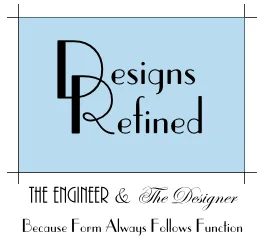Most people recognize that color can influence many of our everyday choices. Major marketing firms have done studies to determine what colors will assure that the consumer “notices” a particular product. Studies have also determined the effect of color on a more subliminal level--the level at which a consumer may not be as aware of the influence.
It is a fact that we are affected by color. There are three different responses to color: emotional, physical, and behavioral. Every color can affect people, and each person will react to a greater or lesser degree to each color. For instance, red evokes an emotional response of love and passion, and is associated with courage, danger and vitality. On a physical level, red increases blood pressure, pulse and breathing rate. A person may eat more in the presence of red. From a behavioral aspect red is the color of impulse purchases, and both aggressive and sensuous behavior.
Yellow is the color of optimism, warmth, cheer, wisdom and brightness on an emotional level. From a physical point of view, yellow sharpens memory; it is no wonder that “post it notes” and “legal pads” are yellow. A behavioral aspect of yellow lies in warnings such as a yellow traffic signal warning that a red light is next.
The color blue rounds out the primary color spectrum generating feelings of serenity and peace as well as sadness and depression. Blue is also associated with sincerity and loyalty. Physically, studies have shown that a blue stimulus will decrease blood pressure and pulse rate; it is cooling and relaxing, and the antidote for red. Conceptual, responsible, dogmatic and conservative behaviors are associated with the color blue; consider the “sincere Blue Suit” that politicians and motivational speakers wear when they wish to sway your opinion or affect your behavior. Blue is the color associated with problem solving.
Secondary colors are just as important in their influence on how we relate to emotional, physical and behavioral aspects of life. Green, for instance, emotionally is associated with growth, birth, envy and inexperience. Expressions like, “she’s pea green with envy” and “he’s a real greenhorn” have been used throughout history to express these life aspects. Rejuvenation and balance may be evoked as a physical response to the color green (think “Spring Green” which is as perennial as new grass). From a behavioral standpoint, green promotes moderation, security and compassion; and is associated with wealth.
Emotionally, orange is the color of activity, vigor and exuberance. While from a physical standpoint, the color tends to decrease hostility and irritability, sadly, orange is associated with cheap, inexpensive products or businesses. However, orange tends to increase social interaction, and it promotes extroverted and pleasure seeking behavior.
Violet has long been associated with supremacy, reverence, elegance and royalty. Violet has the same attributes in a physical sense as the color blue, in that it decreases blood pressure. Behaviorally, violet stimulates the creative process, philosophical thinking and day-dreaming.
I have always advised my clients to live in colors that they like. Proportion is the key; a little may go a long way in the world of décor. You may love a fun summer shirt with hot pink, bright orange and white stripes, but would you be comfortable living for several years in rooms painted these colors? Probably not, but that isn’t to say you cannot have those colors in your room in more pleasing proportions. Try to avoid over- stimulating children who may have behavioral problems, but remember color can be an effective tool in helping to tame their feelings.




